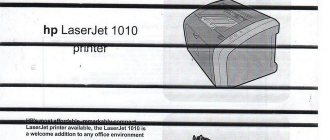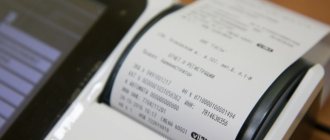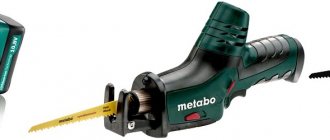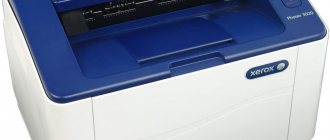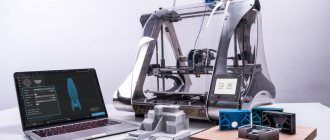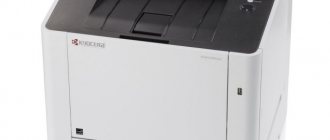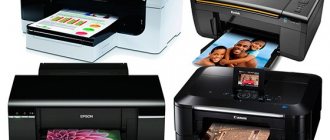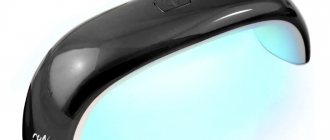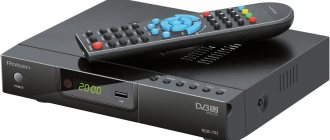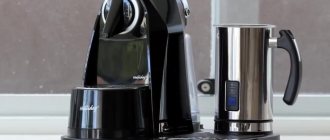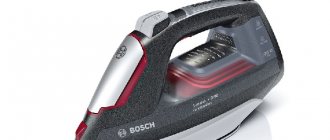Now one of the most popular types of office equipment is printers. When buying them, in 9 out of 10 cases, two types are compared: inkjet and laser. There are also narrowly targeted techniques. From this review you can find out what an LED printer is and for which areas it is currently relevant. Let's get acquainted with the history of the technology, the principle of operation, as well as the advantages and disadvantages. Let’s compare separately and find out which is better: LED or laser printing.
History of appearance
LED printing as a technology was invented in the 1980s. At that time, expensive and difficult to operate laser equipment was used. A group of engineers came up with a solution - to replace lasers with affordable LED strips. As soon as this printing method was invented, many manufacturers included at least one LED model in their line of printers. However, this technique has not found wide demand.
If we talk about modern technology, then Casio has the lead. One of the first devices was introduced by OKI in 1987. A year later, a color model appeared in its assortment. Further, with the development of the market, other manufacturers began to appear: Kyocera, Panasonic.
The first LED printers appeared in Russia in 1996. These were devices from OKI, which opened its branch in Moscow.
LEDs in printing
Comparing laser and LED printing technologies is difficult. It cannot be said that one of them is categorically better than the other. Both options have their advantages. The history of the black and white LED printer began back in 1987, when the first model went on sale. A practical, affordable color device was presented to customers only a decade later. True, the models of the 90s era were not of very high quality, which spoiled the reputation of the technology as a whole.
In many ways, color LED printers have proven to be not very good devices, because users themselves made mistakes when operating the devices. Many used cheap, low-quality toners, others used the machines too actively, exceeding their service life several times over. The high popularity of this type of device in our country in the 90s was explained by its low cost. Now the price of LED printers is higher, but the machines have also become much more reliable.
Principle of operation
LED, that is, light-emitting diode, printing works on a similar principle to a laser beam. The key part of any printer is the photo roller. It looks like a cylinder with a photosensitive semiconductor coating. The light source falling on the part changes its electrical resistance. When light hits one of the sections of the photoshaft, it loses its charge and serves as a current conductor.
Laser technology works like this: as a result of the glow, electrostatics act, due to which the toner (coloring substance) is transferred to the photo roll. The same electrostatic effect is necessary for the toner to be drawn to the paper (it has a positive charge) and form a picture on it. Next comes high temperature (about +200 degrees) and pressure, under the influence of which the toner settles even more firmly on the paper. A laser beam is responsible for the light in such a printer.
The main light source of an LED device is small LEDs located linearly throughout the photo shaft. Their number can reach 10 thousand pieces. To form a primary image on paper, it is enough to turn on a certain number of LEDs. The further principle of operation is similar to laser technology: under the influence of light and electrostatics, the toner “sticks” to the paper, forming an image. It is treated with heat to ensure a strong hold on the surface.
Based on this, the key difference between laser and LED equipment is the light source . It is worth mentioning here the fact that LEDs do not move, whereas in a laser printer the parts are in constant motion. However, LED technology is more progressive, if only because the “line with light bulbs” is capable of being illuminated only in the necessary places.
Specifics of technology
It was already stated above that laser and LED printing machines have much in common. This is due to similar basic principles, while the difference is explained by the specifics of the design. The machines take up little space, operate quietly and rarely break down.
During operation, LEDs quickly illuminate the desired areas of the field using reliable technical solutions. Due to this, printing via LEDs has become efficient, economical, and attractive. The cost per print is very low, the machine is easy to use, and there is no need for maintenance.
Color printing technology
The printer receives a file (with a color image), then the raster processor parses it into the following colors:
- Cyan – blue;
- Magenta – raspberry;
- Black – black;
- Yellow – yellow.
When processing paper, the printer operates four photocylinders simultaneously, each applying the required color (in one pass).
There are two ways to implement color printing:
- With one pass. Popular due to the speed of image formation. The printer has four photocylinders that are activated when the paper passes along the transport belt;
- Multi-pass printing. The difference between such printers is the presence of intermediate media. It passes along the shaft, and at this time an image is applied to it (1 of 4 photo cylinders). When everything is printed, the finished image is transferred to paper. This is a rather slow printing method, and noisy.
Printers for large companies
OKI C712dn
It is a fairly powerful network product designed for active use within an office designed for 15-20 people. The printer has the ability to carry out high-quality printing of fairly large volumes, and paper density can reach 280 g/m2. m, operating speed is 36 sheets per minute. You can use only black and white printing; color cartridges will not waste their resources. The cost of one color print (taking into account that the photodrum will also gradually exhaust its resource) is 1.46 rubles; in terms of black and white copies, the situation is even better - one page will cost only 56 kopecks. This allows you to use the printer even for printing purposes: to make business cards, various kinds of booklets, postcards, calendars, and so on.
More: TOP 10 best massage mattresses, how to choose a mattress for massage
If the loads placed on this equipment are quite large, and it has to interact with significant amounts of data, then there is a slot for connecting a memory card up to 16 GB. If necessary, you can refill the cartridges yourself - there is nothing complicated in this process; toners from the manufacturer are available for sale. The design has a standard set of modules for wired and remote operation; drivers are installed automatically, without user intervention.
Advantages:
- Very convenient and functional office equipment;
- Allows you to receive large volumes of printed products;
- Good value for money;
- High-quality assembly, without creaks or backlashes.
Flaws:
- Some users say that the product is too large.
OKI C712dn
Ricoh SP 450DN
It has a body made of light plastic with a matte finish. It is quite durable and resists various types of damage and physical impacts. There is a dark insert that highlights the four-line LCD display, and there are also several mechanical control buttons. The build quality is quite high - all elements of the case are reliably fitted to each other, the gaps between them are practically indistinguishable, there are no creaks or backlashes. The lower paper tray has a very convenient handle. There are also special handles on the sides to make it easy to move the printer from one place to another. The design has a special bypass tray that allows you to apply permanent images to transparent films, cards, cardboard, envelopes and other products. The capacity of this tray can reach up to one hundred sheets, depending on the material used.
The set of interfaces here is quite large. The printer can be connected to a personal computer via a regular cable or integrated into an office network. Wireless connection via Wi-Fi module is also present. If you use the printer for network work, the function of printing images and documents from mobile devices - smartphones or tablets - becomes available. The drivers are installed independently, the user does not have to do anything for this. The printer has a fairly fast response. It has a powerful processor and 512 MB of RAM, which can be increased up to 1 GB if necessary. It is also possible to connect a flash drive or hard drive with a capacity of up to 320 GB.
Advantages:
- High productivity, which is important for large offices;
- It can be used by up to 4 people at the same time;
- Quite acceptable overall dimensions;
- The product is easy to operate and also has a small liquid crystal display;
- Excellent build quality%
- Support for working with mobile devices.
Flaws:
- The display diagonal could have been larger.
Ricoh SP 450DN
1. Xerox VersaLink C7000N
It is produced on the basis of the latest ConnectKey technology, thanks to which standard office equipment turns into a full-fledged assistant and assistant, which almost fully meets the requirements of fairly large organizations. The printing speed for both black and white documents and color images is the same - it is up to 35 pages per minute, and the resolution is very high - 1200x2400 dpi. This printer provides the ability to transmit and receive data from various cloud services such as Google Drive, Microsoft OneDrive, Dropbox and many others. This makes both office and remote work much easier.
On the front side there is a 5-inch diagonal LCD touch screen. This allows you to use the printer as easily as using a regular smartphone or tablet. The interface can be customized to suit specific work environments and individual user requirements. The product has a driver installation wizard that allows you to complete this process completely automatically, and it will also configure account and network settings. This equipment is quite powerful; the printer can even work with A3 format - in this case, the printing speed is 19 sheets per minute. Not every laser printer can boast of such indicators. The performance of the equipment is ensured largely by a powerful processor with a clock frequency of 1050 MHz and 2 GB of memory. The printing resolution is also quite high - 1200x2400 dpi, the printer can produce up to 153 thousand copies per month, there is a booklet maker that allows you to produce multi-page booklets and even magazines.
Advantages:
- It will be a real godsend for companies for which high speed of work is very important;
- Can print on fairly thick media - postcards, envelopes, and so on;
- The interface is very simple - even an inexperienced user can understand it;
- The cartridge has a long resource - up to 6000 copies.
Flaws:
- Quite a large model;
- Expensive.
Xerox VersaLink C7000N
Black and white printing technology
The principle of black and white printing is simple: LEDs remove the charge from the points to which the toner is attracted. Compared to color analogues, here the source file is not decomposed into four colors. These printer models are cheaper. In addition, they have a decent speed and cost per printed sheet.
The photocylinder has a working resource. In the case of a color printer, the indicated number is immediately divided by 4, which may indicate the durability of black and white options.
For home use
Xerox Phaser 6020
One of the most budget models, it has the ability to print up to 30 thousand pages per month. In the process of work, it uses a standard set of colors from the CMYK palette; the highest print quality on this device is 1200x2400 dpi. The amount of RAM is 128 MB with a processor frequency of 525 MHz. The equipment has a built-in Wi-Fi module, which allows you to connect it to a personal computer or laptop without the use of wires. In addition, you can send documents to this printer from your smartphone. This equipment is designed to work with Microsoft Windows operating systems from version 7 and higher. Unlike other similar equipment, the output here is very rich colors, which even have a slight gloss, which gives the picture greater clarity and realism.
The design is placed in a plastic case, all the parts of which are tightly fitted to each other, there is not even the slightest hint of extraneous creaks or backlash. Plastic with a matte finish is used, so dust will not accumulate on the equipment or fingerprints will remain. The printing speed is not too high - only 12 pages per minute. It is one of the lowest among the models included in our rating, but in terms of print quality the printer is significantly superior to both laser and inkjet products. Office equipment can work with paper whose density ranges from 60 to 220 grams per square meter. One cartridge will be enough for 2000 pages in black and white and 1000 in color.
More: Top 10 best ceramic electric kettles
Advantages:
- Excellent print quality – the best you can get at home;
- Quite convenient to use;
- Easily connects to devices via Wi-Fi;
- Works very quietly;
- Reasonable cost of consumables.
Flaws:
- It can be difficult to find drivers for Windows
Xerox Phaser 6020
Brother HL-3140CW
The highest print quality of this equipment is 1200x600 dpi. This indicator is quite enough to obtain clear text and bright color images - drawings, graphs and even presentations. The printing speed is slightly higher than that of the previous model - it is 18 pages per minute, and this figure is completely independent of whether black and white text or a color image is printed. Such indicators are quite sufficient not only for home use, but also for use within a small office. The consumables used here are four multi-component cartridges. Black is rated for approximately 2,500 prints. The CMYK color palette is also used here, which, in addition to black, includes yellow, magenta and cyan. Each of these cartridges has a working life of 1400 pages.
It is worth noting that the developer company has released improved versions of cartridges that allow you to receive up to 2200 images. All of them are refillable, thanks to which you can significantly save on the maintenance of this printer. Another consumable item is a unit equipped with photosensitive rollers - it has a resource of up to 15,000 prints. The waste toner box will need to be replaced after approximately 50,000 pages. The LED strip can also withstand up to 50,000 prints. Almost all elements of the printer can be replaced if necessary, which significantly reduces the cost of using the design. In terms of paper flow control, the technology is not anything remarkable - the tray can hold up to 250 sheets, the receiving niche is designed for 100 prints. Duplex printing is not provided here. You can connect the device to a computer using a standard USB cable that comes with the equipment, or you can use various wireless technologies. The printer is able to work with all operating systems - Microsoft Windows, Apple Mac OS, Linux.
Advantages:
- Elementary setup that even a novice user can handle;
- Cartridges do not have manufacturer's chips, so if they break, analogues can be installed;
- Can work with paper up to 250 gsm;
- Good clarity of color and black and white images;
- Long service life of one cartridge refill.
Flaws:
- A bit pricey.
Brother HL-3140CW
Xerox Phaser 3052NI
Just like the previous equipment, it is well suited for both home and small office, where there is a significant need for high-quality and fast printing. The performance characteristics are quite high, and there is no need for wires due to the presence of a powerful Wi-Fi module. The printing speed is decent - 26 pages per minute, and this figure is stable, unlike laser printers. Of course, there are more efficient designs, but for a home and small office this figure will be quite enough. This equipment can make up to 30 thousand copies per month. The only similarity with laser printers is the need for preheating before starting work, but this process takes much less time - only 14 seconds.
The printer consumes a minimum of electricity, for example, when in standby mode, it will consume only 2 W per hour, thanks to this it is one of the most economical in this segment. The body, like most products of this brand, is made of matte plastic, painted white and rich blue. This allows the product to fit organically into any interior. The build quality is excellent - not a single user has any complaints about it.
Advantages:
- High printing speed;
- Excellent reliability;
- Good workmanship.
Flaws:
- Only black and white printing is provided, there is no color module.
Xerox Phaser 3052NI
OKI C532dn
One of the most productive products from the Japanese company OKI allows you to receive up to 60 thousand prints per month - largely thanks to this factor, the model took first place in its segment of the best LED printers. The memory module has a decent capacity – 1 GB. This allows the device to work with a large number of documents of various formats at once. The print resolution is 1200x1200 dpi with a color printing speed of 30 pages per minute. This allows you to use such a printer not only at home, but also in light and medium busy offices. There is an original Private Print confidential printing function; documents can be sent to this printer through mobile devices - smartphones, phones, tablets and other similar gadgets.
The device supports Gigabit Ethernet, thanks to the use of this technology, even large amounts of data can be quickly transmitted over wireless networks. The printer is universal in terms of supporting paper formats - from A6 to sheets 1320 mm long. It is capable of working with paper of various weights, which can reach 220 gsm. m. The standard capacity of the loading capacity is 250 sheets, but if necessary, you can connect two more paper trays, due to which this figure increases to 1400 sheets. In addition, there is a so-called multi-purpose tray, which will recognize the type of paper in an automatic format. This printer supports duplex printing technology, which will be very useful in an office environment.
More: Xiaomi Dreame P10 wireless vacuum cleaner - full review of the vertical vacuum cleaner
Advantages:
- Quite a powerful device;
- High print quality;
- Long service life;
- Supports various paper formats and densities;
- Possibility of increasing the volume of the feed tray.
Flaws:
- Consumes quite a lot of electricity;
- It takes a relatively long time to warm up – it takes about 30 seconds.
OKI C532dn
Advantages and disadvantages
Having familiarized ourselves with the operating principle of the equipment, we will determine what its pros and cons are. Only by identifying strengths and weaknesses can you decide on the appropriate technique. Advantages of LED printer:
- More compact than a laser gun. This is explained by the design of the scanning system, which requires less space than lenses and mirrors;
- The forming mechanism has no moving parts. As a result, the equipment itself is more durable and the print quality is higher;
- In an LED printer, each LED has the same light spot shape. In laser models, special lenses are responsible for correcting this spot;
- Parallel data feed to the mechanism ruler.
There are also disadvantages:
- Variation of parameters. The fluctuation of this value reaches 30%;
- Difficulty adjusting print quality (due to fixed LEDs);
- Over time, one LED will begin to shine dimmer than the other, causing print quality to deteriorate. In this regard, laser technology wins, in the design of which there is only one diode controlled by special photo sensors.
Can't do without problems
The advantages and disadvantages of LED printers are points that have long caused debate among buyers. Is it worth spending money on such a car? It is known that LEDs have one significant problem - the brightness of the glow varies quite a lot, and this is difficult to control. The manufacturer usually mentions 15% deviations, but in fact this figure can reach 30%. Much depends on the quality of the lamp. With similar parameters from different companies, LEDs can vary greatly in terms of actual deviation, and this determines the quality of the print. In this regard, OKI LED printers have proven themselves quite well.
To correct deviations, a special system was developed to maintain the quality of prints at a high level. For laser printers it is quite simple, since there is only one light source. But for the sake of their competitors, the engineers had to get wise, because the principle of operation of an LED printer within the framework of printing one sheet of A4 format is the use of more than five thousand light sources. However, the problem was solved, a compensation system was developed - however, it costs much more than a laser one, which also affects the quality of the machine as a whole. The best LED printers are not sold cheaply.
Myths about LED printers
Foreign manufacturers, introducing LED devices in Russia, encountered a number of failures, which is why the following myths were formed:
- Equipment with LEDs is short-lived and cannot cope with a large number of documents. Let’s immediately make a reservation that there are amateur, that is, household, and professional models of printers. For some time, the maximum performance of an LED device was no more than 40 pages per minute. Current models are in no way inferior in printing speed to laser printers;
- Low print quality compared to laser technology. If you use original consumables, the images will be more detailed, preserving the smallest details. On the other hand, the use of originals affects the price of one print;
- High price of LEDs. This is partly true - original equipment and software for it are not cheap. But even if universal consumables are used, the equipment will last a long time. By the way, some OKI printer models have a lifetime warranty.
Clarity, accuracy and quality
The use of LED technologies has one important drawback - the low accuracy of dot illumination. The comparison is noticeable if you make identical prints on laser and LED printers at once.
LEDs are more suitable for printing documents, although they are also good when you need to print photographs and pictures. However, such machines should be used only for amateur photographs, otherwise the quality will be disappointing. LED printers benefit from high print speed and fairly good quality.
Which is better: LED printing or laser
Laser technology is suitable for those users who print a lot and often (mainly black and white documents with text). Most often, such printers are found in offices. Among the advantages of such devices: printing speed, cost per printed sheet, a clear and detailed image is obtained, toner quality (does not flow like liquid ink), load resistance. Disadvantages: ozone is released during operation, high price of printers, dimensions (larger than inkjet ones).
As for LED printing, it is almost identical to laser printing, only the light source is not a laser beam, but an LED line. This reduces the price of equipment and eliminates the emission of ozone. Single-pass color technology increases the speed of printing color documents. Such office equipment is suitable for a large office with intensive printing. The only negative is that no two LED lines are completely identical. This means that two identical printer models are not capable of printing completely identical documents. Of course, this is not visible to the eye.
Individuality: advantage or disadvantage?
Of course, when it comes to a person, individuality is an important and necessary quality for a full-fledged personality. But this cannot be said about printed sheets of paper. And this leads to another negative quality of LED printers - the inability to print two completely identical sheets using such a machine.
When printing, LED lines are used, consisting of a huge number of light sources. When transmitting an image for printing, recoding is performed, but slight differences in the decoding process are possible, which leads to differences in the images. It is impossible to make two completely identical prints. Although, of course, the difference will be quite small, so you can consider it insignificant and not pay attention to this point. Moreover, laser printers suffer from the same problem.
Consumables for LED printers
The photodrum and toner cartridge work separately, that is, if the resource of one is over, the other element operates. The cartridge itself looks like a plastic cylinder with toner. 90% of the price depends on the toner itself, so “refilling” is not relevant. However, such saving practices still occur, which leads to deterioration in print quality. Many manufacturers produce toners with a chip - they cannot be refilled. Consumables from little-known companies are sold at prices starting from several hundred rubles, while originals cost from 800 rubles.
The second consumable is paper. For each printer model, the manufacturer specifies the required paper requirements. The main parameter is type. Some devices are designed to work with labels, others - with glossy coatings. If you take a standard quality office sheet, it will fit any device. There may be a limit on the number of sheets per tray.
What should you pay attention to?
The key feature of the technology we are considering is the presence of LEDs, the dimensions of which, as indicated above, are very small. Due to this, it is possible to adjust the size of the printed dot down to minuscule ones. This technique is indispensable for achieving a smoothing effect. Modern models provide for adjusting the brightness of lighting sources - the parameter is set individually for each LED. This technology affected the quality of prints, significantly improving them.
The difference between an LED printing device and a laser one is the separation of the print drum and the toner cartridge. This allows each component to be replaced individually as it wears out. A cartridge is a cylinder, the main part of the price of which is the cost of the actual coloring material (about 90%). Therefore, there is no point in refilling the cartridge; you can buy a new, legal, high-quality one every time, that is, without damaging the car. Saving on a cartridge leads to rapid failure. Moreover, a manufacturer who discovers that the user refilled the cartridge himself may not accept the machine for warranty service.
TOP 5 LED printer models
OKI C532DN. Budget but productive model. The device memory is 1024 MB, which allows you to work with large volumes of documents. An important and advantageous parameter is the print resource, which is 60 thousand pages per month. Based on this, the model from the Japanese manufacturer is relevant for both intensive printing at home and in the office. The color printer is capable of printing 30 pages per minute with a resolution of 1200 x 1200 pixels. The only downside is the long warm-up required to start working – 27 seconds.
BROTHER HL-3140CW. Let’s immediately outline the advantages of the model: increased cartridge life and an expanded paper tray (which can accommodate 251 sheets). The printer's performance level is 18 sheets per minute. If we consider the capacity of the cartridges, they contain so much ink: black - 2500 pages, color - 1400 pages. The modern model, respectively, supports a Wi-Fi connection, AirPrint technology (iOS devices) and an interface for USB connection.
RICOH SP 400DN. A balanced black and white and color printing device suitable for a medium-sized office. The “stuffing” is as follows: printing 30 A4 pages per minute, working resource – 50 thousand copies per month. If the printer is not used for its intended purpose, that is, it is in idle mode, the power consumption is only 1 W - a record value. However, the situation is reversed during operation - the consumption rises to 990 W. And yet, this is a running model.
Xerox Phaser 6510DN. This is an affordable, but at the same time productive model. Let us immediately note that this “LED” requires thicker paper (220 g/m2 compared to the classic 162 g). Print quality – 1200 x 2400 pixels, speed – 28 pages per minute. The device does not require warming up, and yet the first print comes out in 12 seconds. Working resource – 50 thousand copies per month. There is support for AirPrint technology, designed to make work easier for owners of smartphones and PCs from Apple.
Xerox Versalink C7000N. One of the most powerful LED printers, which is suitable for printing A3 documents (with a printing speed of 19 pages per minute). Since the device “accepts” larger consumables, this affected its hardware: a processor with a frequency of 1050 MHz, RAM – 2048 MB. Thanks to its characteristics, the device is suitable for large offices. Among the advantages are: print quality - 1200 x 2400 pixels, resource - 153 thousand copies per month.
Choosing a cheap and reliable laser printer for the home Alternative options to expensive diode models.
Weaknesses: are there any others?
When considering the advantages and disadvantages of LED printers, we cannot ignore the speed parameter. If we compare the main part of the market models, we can see that the printing speed of a laser device is almost twice as fast as that of an LED device. However, the disadvantage is quite relative. Of course, the best LED printers print faster than the average ones, but for the average person, even a relatively slow machine is unlikely to be a source of inconvenience.
For home use, it is almost impossible to notice the difference. In fact, only office workers, where there is a large paper flow, will pay attention to this, and they have to print hundreds, thousands of pages a day.
